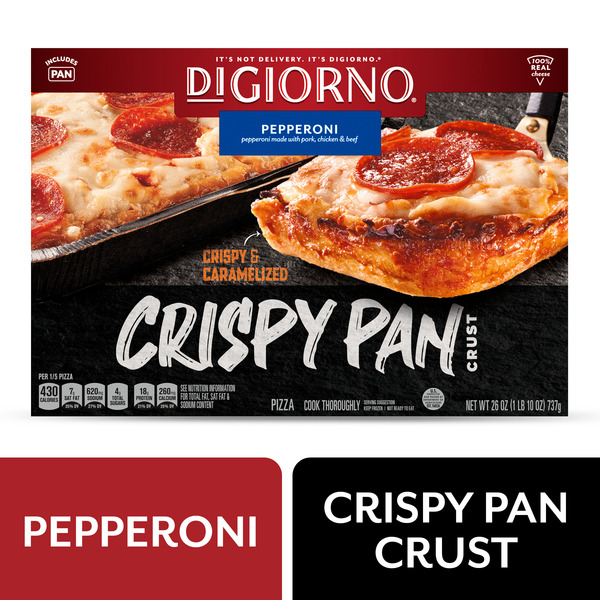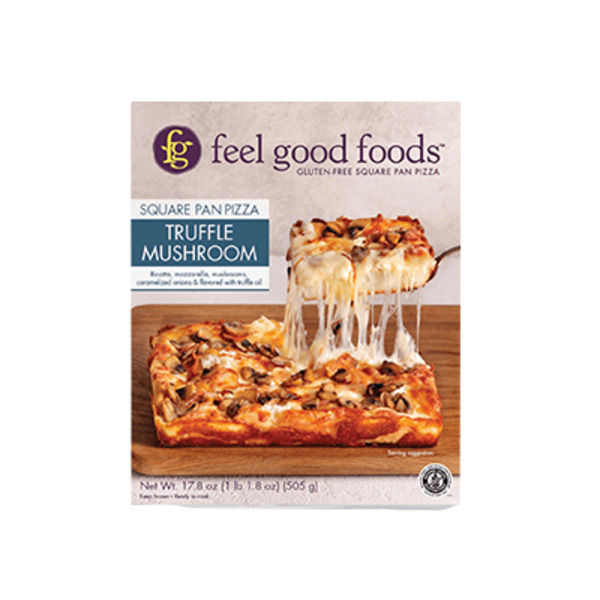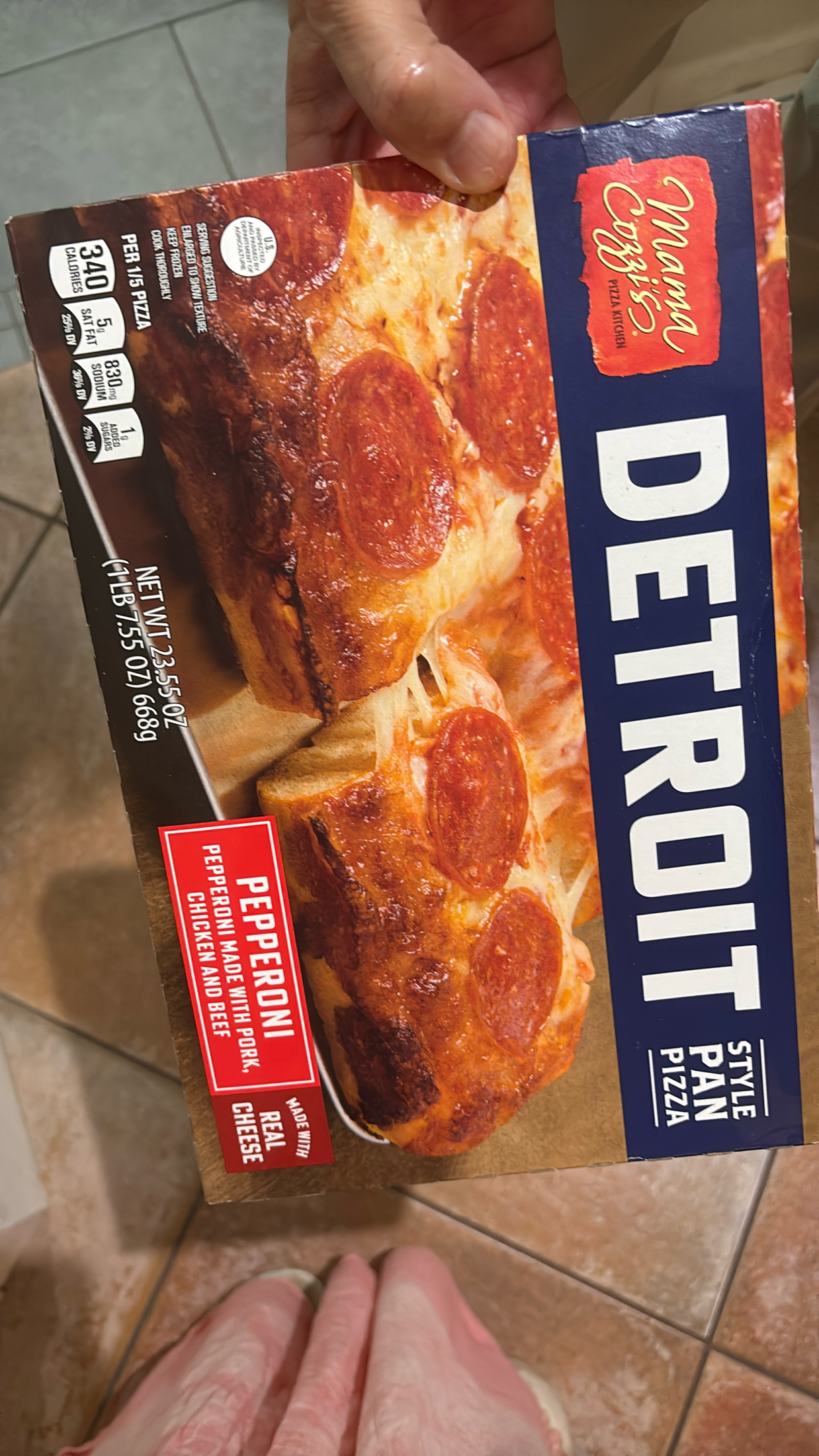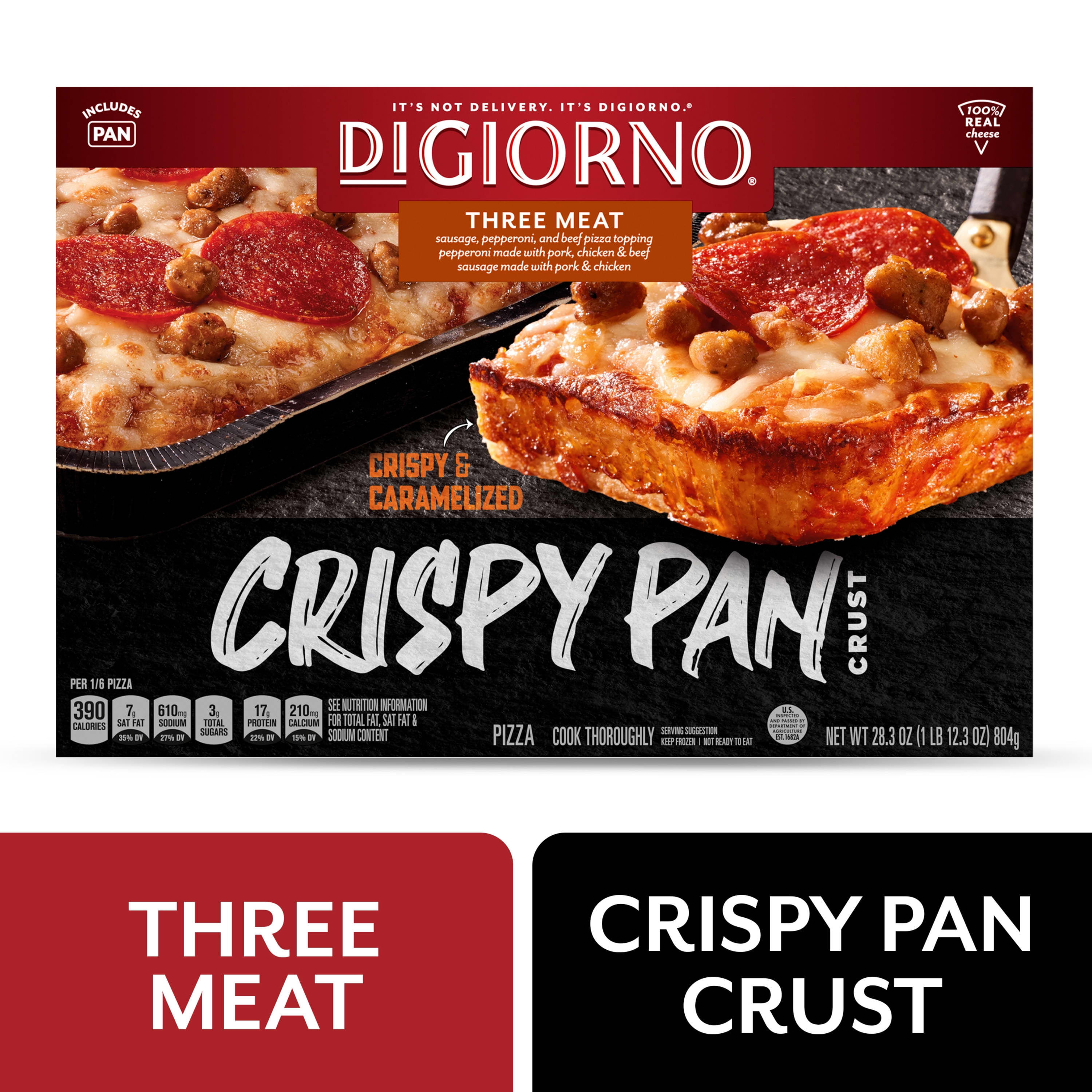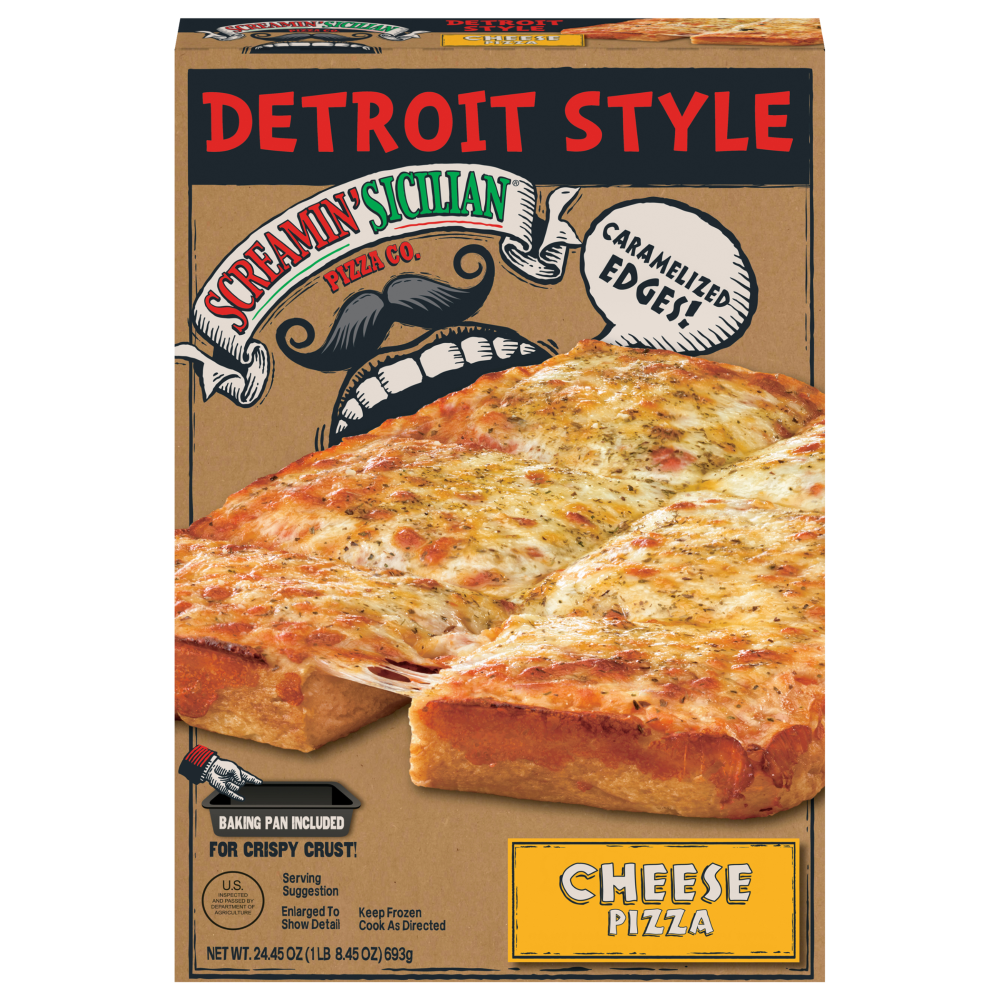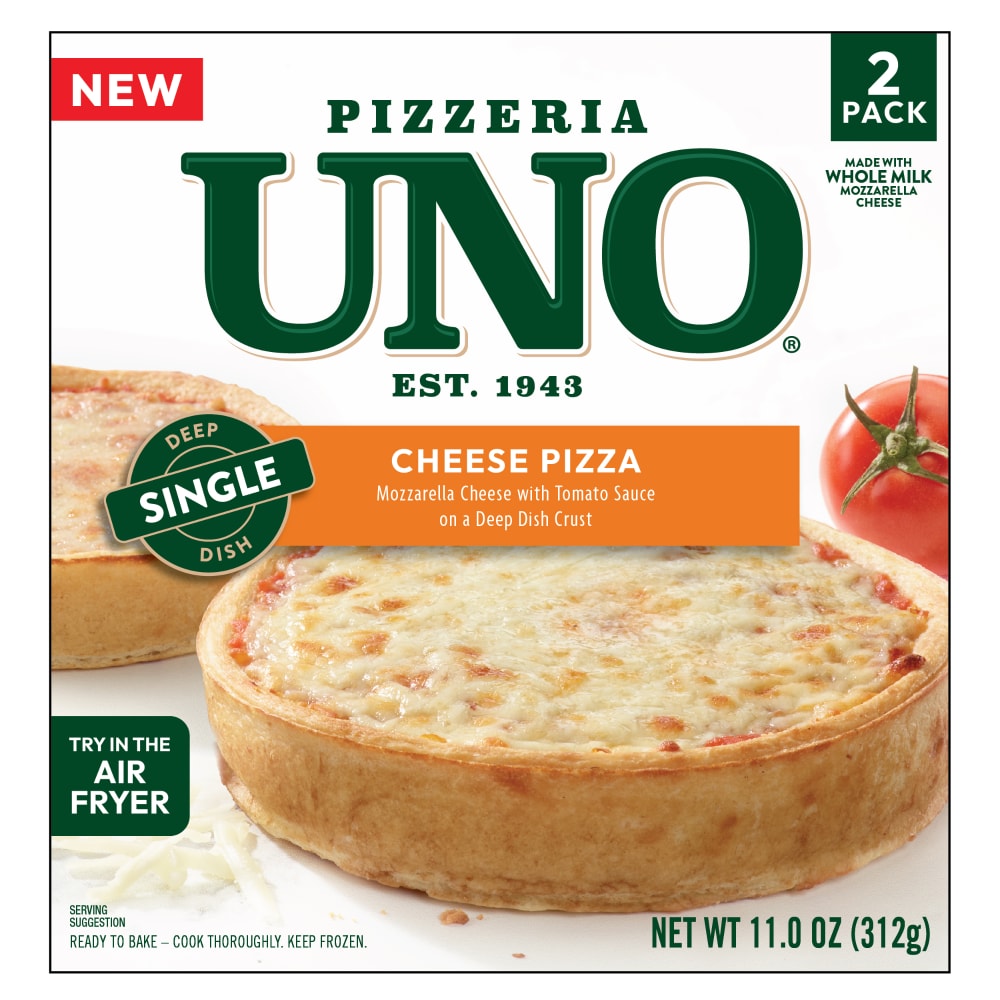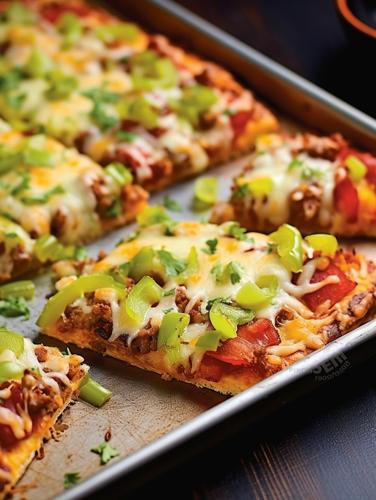Pan Pizza
Pan pizza is a hearty alternative to traditional thin-crust versions, widely appreciated for its thick, fluffy base and crispy, cheese-encrusted rim. Thanks to its deep cooking vessel, sauce, cheese, and toppings are generously layered, promising a flavorful bite at each mouthful.
Making pan pizza at home involves baking the pizza in a depth-giving pan which creates its iconic deep-dish appearance. The process is simple, from preparing the dough, letting it rise, to layering your favorite ingredients and cooking it to perfection. The result is a robust pizza experience that's perfect for family dinners and casual gatherings.
49%
CARBS
29%
FAT
23%
PROTEIN
32 Pan Pizza Products
DiGiorno Detroit Style Crust Double Pepperoni Pizza (Frozen)
DiGiorno Crispy Pan Pepperoni Pizza
DiGiorno Frozen Pizza Thanksgiving Pizza Detroit Style Crust
DiGiorno Pan Pizza, Four Cheese, Crispy
Feel Good Foods Truffle Mushroom Square Pan Pizza
Detroit Style Pan Pizza
Feel Good Foods Four Cheese Square Pan Pizza
Three Meat Sausage, Pepperoni, And Beef Pizza Topping Crispy Pan Pizza, Three Meat
Screamin' Sicilian® Cheese Detroit Style Frozen Pizza
Pizzeria UNO 2Ct 5" Cheese Pizza, Frozen
1 Recipe for Pan Pizza
Pan Pizza FAQ
Pan pizza is an iconic dish that can be tricky to get just right, but with a few guiding tips and tricks, it's possible to make a restaurant-worthy pizza at home. One common mistake people make is not letting their dough rise enough; this is essential as it gives the pizza its thick, airy crust. Temperature is another key area - your oven should be preheated well before you put the pizza in, ensuring a consistent cooking process and a crisply finished crust and bottom. Toppings should be generously applied and cheese should cover the entire pizza, right to the edges, to create a cheesy, crispy crust. The pizza pan you use also makes a big difference; a dark, heavy pan is best as it retains heat and cooks the pizza evenly.
While a simple dish, people often wonder how can they replicate the restaurant's crust texture at home: it's about combining a good dough, a high temperature and the right oven setting. Another common query is about the amount of sauce - too much can make the pizza soggy, but it's important to have enough to create a juicy and flavorful pizza. The order of layering ingredients on pan pizza, unlike the traditional one, once mastered can also make a significant improvement in the taste.
How long should I let the pizza dough rise for a pan pizza?
What's the best type of cheese for pan pizza?
At what temperature should I cook my pan pizza?
How can I get a crispy crust on my pan pizza?
Should I put toppings on my pan pizza before or after it cooks?
Why does my pan pizza come out soggy?
What kind of sauce is typically used on a pan pizza?
What's the best order for layering ingredients on a pan pizza?
Can I use a regular cake pan to make pan pizza?
What kind of dough is typically used for pan pizza?
Substitutes
Health Info
Macros
13g
CARBS
16g
FAT
12g
PROTEIN
Allowed on these diets
LOW FAT
HIGH CALCIUM
VEGETARIAN
GLUTEN FREE
Contains these allergens
WHEAT
MILK


